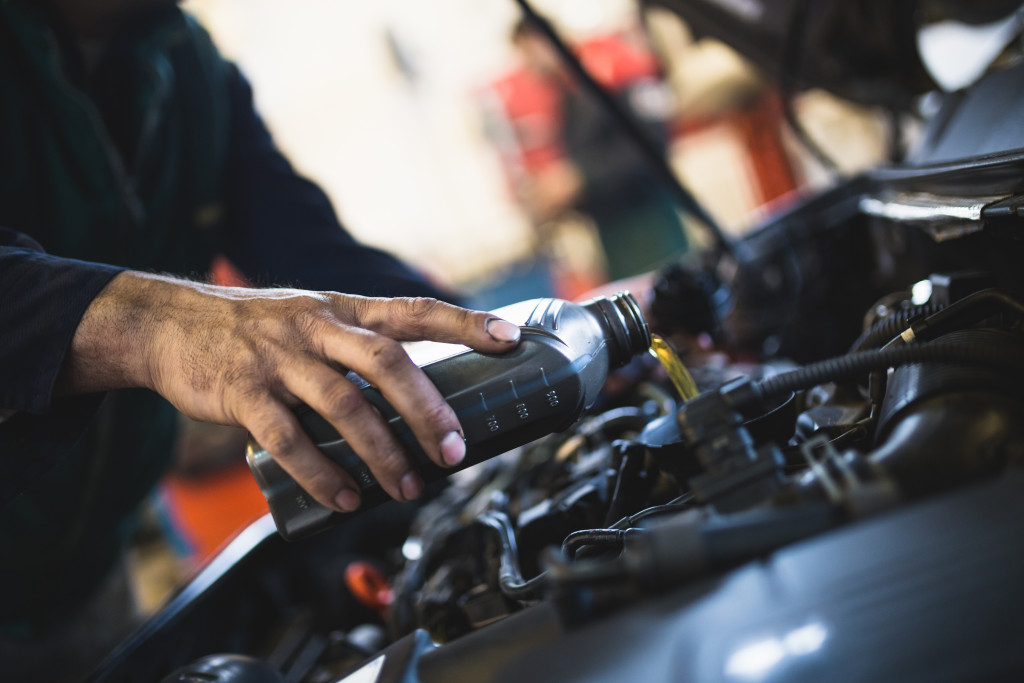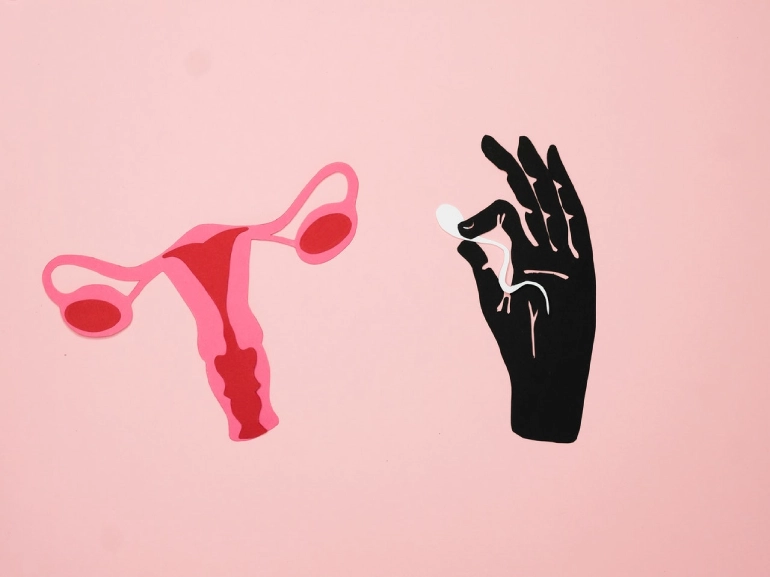Whether you are a new driver or you’ve been behind the wheel for years, it is important to know how to take care of your car. After all, your car is a significant investment, and proper maintenance will help ensure it runs smoothly for years. With that in mind, here are six essential car maintenance tips every woman should know.
1. Check Your Tire Pressure Regularly
One of the most important things you can do to maintain your car is to check your tire pressure regularly. This is something that you can do yourself in just a few minutes. Simply locate the valves on each tire and use a tire pressure gauge to see if they are at the correct level. If they are not, add air until they reach the correct level.
You should check your tire pressure at least once a month and always before going on a long road trip. Not only will this help improve your gas mileage, but it will also help prevent flat tires and blowouts.
2. Replace Your Windshield Wipers When Necessary
Another simple but important maintenance tip is to replace your windshield wipers when necessary. Depending on how often you use them, you will typically need to do this once or twice a year. It is time for new ones when they show signs of wear and tear, such as leaving streaks on your windshield.
No one likes dealing with a dirty or streaky windshield, so keep your wipers in good condition. This is one car maintenance task that’s easy to do yourself and doesn’t require a trip to the mechanic.
3. Get Regular Oil Changes
When it comes to car maintenance, one of the most important things you can do is get regular oil changes. Most mechanics recommend getting your oil changed every 5,000 miles or so. This helps keep your engine clean and running smoothly.
If you’re unsure how often to change your oil, consult your car’s owner’s manual. You can also ask your mechanic for guidance. Also, use the type of oil recommended for your car. Using the wrong type of oil can damage your engine.

4. Maintain Your Car’s Exterior
It’s not just the engine that needs care and attention. You also need to maintain your car’s exterior. This includes washing it regularly and avoiding scratches, dents, and other damage.
Washing your car regularly helps prevent rust and keeps it looking its best. If you don’t have time to wash it yourself, plenty of professional car wash services are available. You should also use car protection films to help keep your car’s paint in good condition. Websites like oneofonesandiego.com offer a wide variety of car protection films. So, if you want to keep your car’s exterior in tip-top shape, check them out.
5. Inspect Your Brakes Regularly
One of your car’s most crucial safety elements is its brakes, so it’s crucial to check them frequently. It’s time to have them inspected by a professional if you hear odd noises or feel unusual vibrations when you brake.
Having your brakes inspected at least once a year is also a good idea by a qualified mechanic. This is one maintenance task you shouldn’t try to do yourself. After all, if your brakes fail, it could be disastrous. So, play it safe and leave this one to the pros.
6. Understand the Car Battery System
Besides powering the car’s electrical circuit, the battery also starts the car with the turn of a key in the ignition. A car’s battery’s main purpose is to prevent power spikes from keeping the ignition system and the internal computer from suffering damage.
Keeping the battery clean is yet another of the useful tips for women to maintain cars. The thing about car batteries is that, over time, the battery will succumb to corrosion, which can look like pinkish or white powder on its surface. More precisely, corrosion is likely to form on the battery’s terminals, the small metal knobs on the top of it.
If you don’t keep the battery clean, you’ll likely see it crack or stop functioning.
Signs of a dying car battery:
- The horn sounds odd
- The lights don’t look normal
- The battery smells and looks strange
- You can’t turn on the electronic accessories
- You’ve had the same battery for more than three years
Steps to maintaining the car battery:
- Check the levels of acid
- Test the voltage
- Carefully add distilled water
- Clean it regularly
- Keep the cables tied
- Do a battery load test
Best practices for extending car battery life:
- Make sure the battery is always tightly placed
- Always turn off the lights when you aren’t driving
- Keep corrosion out of the way
To ensure the battery doesn’t die on you in the middle of the road, a $5 brush wire and regular checkups will keep you safe from (your own) road rage. Checking up on the condition of the battery twice a year is best.
7. Keep An Emergency Tool Kit
If you wouldn’t let your house be without a first aid kit, why would your car be different? Every driver should have an emergency tool kit in their car, but women drivers are generally more thoughtful in ensuring they have one.
Next up, you should have pliers, wire cutters, and screwdrivers in the kit. Also, a useful emergency tool kit for your car shouldn’t be without a flashlight and a warning triangle reflective sign to put behind your car if you need help on the road.
Essential items in an emergency tool kit:
- First-aid kit
- Duct tape
- Jumping cables
- Pliers, screwdrivers, wire cutters
- Hi-Vis safety vest
- Fire extinguisher
- Towing straps/rope
- Flashlight
Depending on the type of misfortune you find yourself in, you can use all of the items in the emergency tool kit differently. For instance, the jumping cables will help you jumpstart your car, and the pliers will help you remove pins or nails stuck in your tire. You can find solid emergency tool kits online, in car dealerships, and in other places.
8. Change Cabin Air Filters
The cabin air filters in your car are essential for fuel usage efficiency. Many drivers aren’t aware of the fact that air filters do more than just keep the air inside the car clean. A clean air filter will ultimately help you drive more on a single gas tank. On the other hand, a filthy filter won’t protect your engine from leaves, bugs, salt, mud, and other types of debris.
A solid cabin air filter allows optimal air circulation, prevents molding and stale smells, and keeps bacteria
Signs of dirty air filters:
- Acceleration is poor
- The engine underperforms
- Odd noises are coming from the glove compartment
- The Check Engine light flashes
- There’s smoke coming out of the tailpipe
- Poor mileage
Steps to changing cabin air filters:
- Open the glove compartment
- Remove the stop arm
- Release the compartment
- Remove the air filter
- Clean the chamber and check the gaskets and seals
- Install a new air filter
You can check your car at the mechanic and let them do the work, or if you want to do it yourself, the FRAM Cabin Air Filter will probably be a good match.
9. Fix The Scratches
How to easily fix scratches on your car is probably one of the handiest car tips for women we could give. In essence, most scratches we see on our cars can be fixed by a polishing session, but sometimes, having an ace up your sleeve is more than welcome.
If we’re talking about minor, shallow scratches, rubbing compounds will remove the initial layer of paint and make your car appear as good as new. But, if the scratches are rather deep, sanding is probably due.
Causes of scratches:
- External conditions
- Parking close to construction sites
- Bird droppings and dead bugs
- Harsh chemical cleaners and dirty cleaning cloths
Methods to fix scratches:
- Using a damp cloth, wipe down the scratched area
- If there’s any buildup, some wax and grease remover can help
- Apply a generous amount of rubbing compound until polished
Luckily, there are a lot of miracle remedies for car scratches available online, and you can find them as scratch removers, glazing putties, etc.
10. Stay Calm During Emergency
Staying calm when facing an emergency (a flat tire, a fender bender, losing consciousness, etc.) is easier said than done, but nothing is impossible with the right tips and calming techniques.
First and foremost, don’t freeze, and don’t panic. When facing an emergency, we are biologically predetermined to react rather than question what we’re doing.
How to stay calm during emergencies:
- Progressive relaxation: It only takes a minute, and you’ll need to squeeze and release all your muscles simultaneously three times in a row.
- Breathing (The Rule of Three): Not forgetting to just breathe is super important. Do all the steps to the count of three – breathe in, hold your breath, and breathe out. Repeat this three times.
If you ever face a dangerous situation that requires you to stay calm and responsible, remember that the peril won’t last forever. Close your eyes and revisit a happy place for you. It will take some of the stress away and help you stay focused.
11. Keep Interiors Clean
Remember how we always appreciate a person that’s beautiful on the outside? We’d say the same about cars: it won’t mean anything if you drive the latest Benz, and it’s all shiny on the outside but a total pigsty on the inside.
A neat car takes routine, but it can become a task if you’re a busy mom, and we get that. But not all hope is lost, though. You can engage your little ones in helping you clean your car’s interior, say, on a Saturday afternoon, and reward them with a trip to the ice cream shop afterward.
Moms aside, keeping a clean car on the inside takes as little as throwing a bag of nuts in the trash outside your house and not on the car floor, for instance. Plus, stashing those receipts in the glove compartment and all over the dashboard can make your car appear thrashy for no good reason.
Benefits of clean car interiors:
- It keeps upholstery and carpeting clean and functional
- It keeps foul smells and health issues away
- Your driving is unimpaired
- Detailing the Interior adds value to the car
Steps to keep car interiors clean:
- Pick up your trash and get rid of it
- Vacuum
- Clean the hard surfaces and upholstery
- Clean all the interior side of the windows
The occasional vacuuming, brushing, glass gleaning, and wiping are four essentials to a spotless car interior that won’t take up much of your time. Plus, adding a mellow-scented car freshener will make the inside of your car a pleasure to be in.
12. Regular Car Washing
Washing your car whenever it gets dirty on the hood or the bumper will help keep it up and running for longer. Even the tiniest depositions of dirt, mud, and other pollutants can cause serious damage to the paint job on your car.
Rinsing your car often will wash off any residue and minimize the chance of potential damage to your car’s paint and exterior.
Benefits of regular car washing:
- Expands the lifespan of the car
- Maintains its value
- Keeps it safe from mud, grime, road salt, bird droppings, etc.
Steps on how to wash your car:
- Park your car away from the sun
- Rinse it to remove visible dirt
- Have two buckets, one for the cleaning solution and another one with clean water
- Wash your car starting from the top, and move down
- Rinse and dry the car.
- (Optional) add wax
Hosing your car from the top down is a great way to keep it nice and clean. You can go further and do a wash/wax/detail for the spotless experience.
13. Change Brake Pads
Brake pads are super important and are considered usual wear-and-tear gear. Driving with faulty brake pads can lead to serious injuries, so please avoid such a scenario.
Signs of worn-out brake pads:
- There are vibrations when braking
- The brakes squeak or squeal when used
- They appear thin
- The break indicator is on
Steps to change the brake pads:
- Jack the car
- Remove the calipers and then the brake pads
- Clean and lubricate
- Install new brake pads
14. The Air Conditioning Unit
Your car’s AC is what keeps it from becoming dangerously hot. Also, the AC protects the engine from overheating and maintains the right temperature.
Signs of a faulty air conditioning system
- It can’t deliver cool air
- It produced odd noises
- The refrigerant is leaking
- There’s a nasty smell coming out of it
Steps to maintain the air conditioning system:
- Clean the air filter
- Keep your car clean
- Run the AC once a week in defrost mode
- Don’t pre-cool the car
- Don’t run the AC in recirculating mode with passengers in the back seats
- Keep the windows up when the AC is running
Cleaning the AC in your car is best done every year or at least every two years. In general, the cleaning will depend on how often you use it. Frequent use of the AC means you’ll have to clean it more often.
15. Know the Car Maintenance Schedule
Keeping your car in check in every sense of the word is paramount for a few reasons. From maintaining the quality of the car’s performance to containing safety issues, a well-maintained car is a money-saver in the long run.
As one of the many effective car care tips for women, regular car maintenance practically embodies the old saying better safe than sorry. To keep your car up and running like new, make a habit out of routine maintenance services every month, every two months, or every three months. On average, after every 30,000 miles your car drives, a checkup should be due.
Examples of car maintenance schedules:
- Checking engine oil level
- Inspecting the windshield washer fluid
- Checking the coolant
- Making sure the brake fluid levels are optimal
- Checking transmission fluids
- Checking the power steering fluid
Benefits of following a car maintenance schedule:
- Prolongs the vehicle’s lifespan
- Improves road safety
- Substantiates the warranty
Bonus Tip: Understand Your Car’s Warning Lights
One final but important tip is to familiarize yourself with your car’s warning lights and what they mean. These lights are there for a reason, so if one comes on while driving, be sure to take action accordingly—whether that means pulling over and calling for roadside assistance or making a pit stop at the nearest gas station or service center.
The warning lights on your dash warn you when something’s wrong with your car. So, if you see a warning light, don’t ignore it. Be sure to take the necessary steps to address the issue. You can find more information about warning lights in your car’s owner’s manual.
These simple tips can help keep your car running smoothly for many years. Of course, this is just a basic overview; for more detailed information about your car, consult your owner’s manual or ask a qualified mechanic. So, don’t wait—start taking care of your car today!
Wrapping up
Emergency tool kits are more than just a pack of bandages and a first-aid trauma kit. For one, a pair of jumping cables is essential, as they are the go-to solution if the battery suddenly stops working. There’s much to be familiar with, from knowing how to fix scratches to changing brake pads. But, as intuitive as women are, with a little help from some useful tips, there won’t be a thing they can’t learn about their cars.
FAQs
1) What is the most frequent maintenance task for a car?
Changing the oil and filters is one of the common upkeep tasks for a car.
2) What is the easiest car maintenance?
Washing the car is probably the easiest; sometimes, all you’ll need is a hose with a nozzle.
3) How often should you wash your car?
Washing your car every two weeks is a solid choice.
4) What is the most affordable car to maintain?
Both a Prius and Toyota Corolla are affordable and easy to upkeep.
5) At what mileage do cars need maintenance?
Cars should be maintained every 30,000 miles.
6) Which car has the least repairing issues?
Most Toyota models and Honda Accord.



